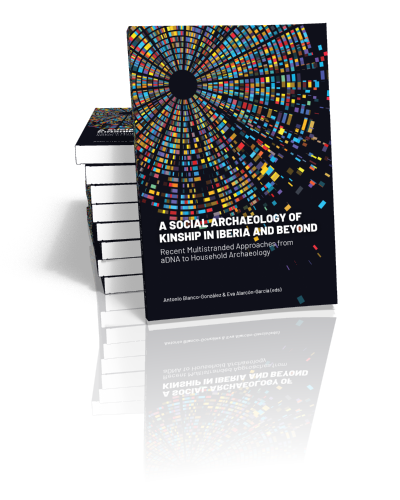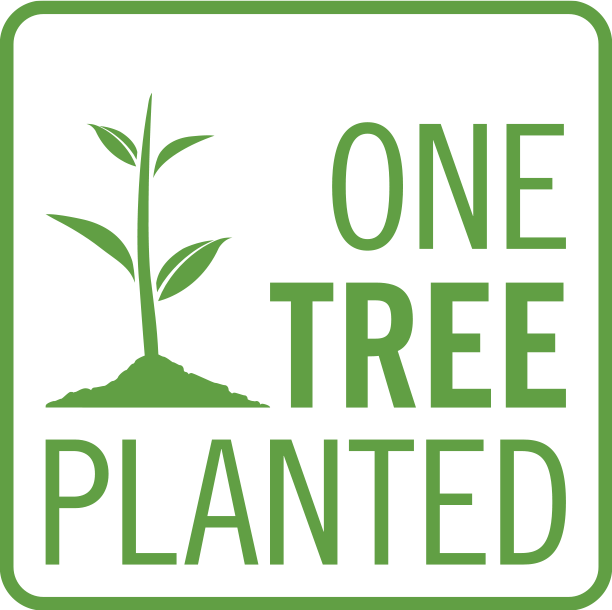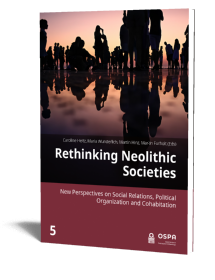A Social Archaeology of Kinship in Iberia and Beyond
Recent Multistranded Approaches from aDNA to Household Archaeology
Edited by Antonio Blanco-González & Eva Alarcón-García | Forthcoming

A Social Archaeology of Kinship in Iberia and Beyond
Recent Multistranded Approaches from aDNA to Household Archaeology
Edited by Antonio Blanco-González & Eva Alarcón-García | Forthcoming
Paperback ISBN: 9789464264043 | Hardback ISBN: 9789464264050 | Imprint: Sidestone Press | Format: 182x257mm | ca. 242 pp. | Language: English | 13 illus. (bw) | 50 illus. (fc) | Keywords: archaeology of kinship; archaeogenetics; household archaeology; methodology; theory; ancient DNA | download cover | DOI: 10.59641/m3p9j0k1l2 | CC-license: CC BY-NC-ND 4.0
Publication date: 12-11-2025
-
Digital & Online access
Digital/Online version not (yet) available
-
Buy via Sidestone (EU & UK)
Get €5.00 discount on forthcoming books by using coupon code "PRE-ORDER" in your shopping cart!
-
Buy via our Distributors (WORLD)
For non-EU or UK destinations you can buy our books via our international distributors. Although prices may vary this will ensure speedy delivery and reduction in shipping costs or import tax. But you can also order with us directly via the module above.
For UK & other International destinations
For USA/Canada & other International destinations
-
Bookinfo
Paperback ISBN: 9789464264043 | Hardback ISBN: 9789464264050 | Imprint: Sidestone Press | Format: 182x257mm | ca. 242 pp. | Language: English | 13 illus. (bw) | 50 illus. (fc) | Keywords: archaeology of kinship; archaeogenetics; household archaeology; methodology; theory; ancient DNA | download cover | DOI: 10.59641/m3p9j0k1l2 | CC-license: CC BY-NC-ND 4.0
Publication date: 12-11-2025

We will plant a tree for each order containing a paperback or hardback book via OneTreePlanted.org.
The study of kinship from archaeology has been fluctuating. At the end of the 20th century archaeologists were reluctant or skeptical about its relevance and viability. However, in recent decades it has gained prominence and today it is experiencing a sweet moment, although not without problems. Its recent impulse has been due to the methodological development of bioscience techniques (aDNA and isotope studies) and to the profound revision and updating of other inference strategies from household archaeology.
All this has resulted in the public interest in kinship in the past, as well as an increasing funding of research programs and a rapidly growing scholarly literature. However, as a line of work in its infancy, the academic landscape is fraught with confusion and interpretive uncertainty. There are various ways of understanding kinship and assorted ways of approaching it from archaeology.
The common identification of kinship as biological relatedness is only a restrictive and context-dependent way of understanding it, which may serve to comprehend our Western society, but is not directly applicable to any other. Archaeology must critically construct its own methods of inference and narratives about kinship as a social matter. It is therefore urgent to reclaim a social archaeology of kinship that collaborates yet is not subordinated to other sciences.
This volume aims to contribute to this challenge. To this end, it compiles case-based essays elaborated by renowned international scholars (archaeologists and geneticists) in which inference methods and interpretative possibilities about kinship in the past are discussed. The volume’s scope is mainly focused on Iberia, although case-studies are drawn worldwide. Spain is a dynamic research hub belonging to a minority archaeological tradition, where varied theoretically informed and promising approaches to the subject are being undertaken and is therefore paradigmatic of current trends and prospects in the international scene.
PART I. INTRODUCTORY CONTRIBUTIONS
Chapter 1. Introduction. For a Social Archaeology of Kinship
Antonio Blanco-González and Eva Alarcón García
Chapter 2. Observations on Methods from Two Decades of Interdisciplinary and Transatlantic Prehistoric Kinship Research
Bradley Ensor
Chapter 3. Kinship, Social Space and History in Prehistory
Stella Souvatzi
PART II. BIOMOLECULAR APPROACHES TO KINSHIP
Chapter 4. Inferring Kinship in Ancient Populations: Advances Using Palaeogenomic Techniques
Rosa Fregel
Chapter 5. Kinship and Residence in Copper Age Iberia: Insights from aDNA and Strontium Isotope Analyses
Marta Cintas-Peña and Ana M. Herrero-Corral
Chapter 6. Kinship and Gender in Bronze Age Argaric Society
Eva Celdrán Beltrán, Vicente Lull, Rafael Micó, Camila Oliart, Cristina Rihuete-Herrada and Mario Valério
Chapter 7. Kinship and Clientele Structures of the Iron Age Southern Iberians (Spain) from the Burial Realm
Carmen Rísquez Cuenca and Arturo Ruiz Rodríguez
Chapter 8. Archaeogenetics Beyond Kinship: The Iron Age Intramural Child Burials of Northern Iberia
Roberto Risch, Luka Papac, Marcello Peres, Patxuka de Miguel Ibáñez, Adam B. Rohrlach, Javier Armendáriz and Stephan Schiffels
PART III. ADDRESSING KINSHIP FROM HOUSEHOLD ARCHAEOLOGY
Chapter 9. A Kinship-informed Comparative and Worldwide Survey of the Multiple Residential Group
Antonio Blanco-González
Chapter 10. Spatial Patterns, Households and Kinship Practices in the Iron Age of Eastern Iberia (450-200 BCE)
Ignasi Grau Mira
Chapter 11. Against Citizenship: Kinship and Heterarchy in Late Roman Celtiberia (Spain)
Jesús Bermejo Tirado
Dr. Antonio Blanco-González
Antonio Blanco-González is a tenured senior lecturer in Prehistory working at the University of Salamanca (Spain). He has previously developed his research as a Marie Skłodowska-Curie fellow at Durham University (United Kingdom) and as a post-doctoral researcher at the University of Valladolid (Spain). He has published numerous contributions in the most prestigious journals (Antiquity, Journal of World Prehistory, Cambridge Archaeological Journal, Oxford Journal of Archaeology, Journal of Social Archaeology, Quaternary Science Reviews, etc.) on later prehistoric Iberia and social archaeology applying multi-proxy strategies.
Dr. Eva Alarcón-García
Eva Alarcón-García is a tenured senior lecturer in Prehistory working at the University of Granada. She completed her postdoctoral studies at Durham University (United Kingdom). Her research is conducted within the framework of feminist archaeology; her interests revolve around the development of the archaeology of maintenance activities (recovery of spaces and women’s work in the past) and the visibility of girls and boys as protagonists in stories, paying special attention to learning and socialising processes within the framework of childhood archaeology.
Abstract:
The study of kinship from archaeology has been fluctuating. At the end of the 20th century archaeologists were reluctant or skeptical about its relevance and viability. However, in recent decades it has gained prominence and today it is experiencing a sweet moment, although not without problems. Its recent impulse has been due to the methodological development of bioscience techniques (aDNA and isotope studies) and to the profound revision and updating of other inference strategies from household archaeology.
All this has resulted in the public interest in kinship in the past, as well as an increasing funding of research programs and a rapidly growing scholarly literature. However, as a line of work in its infancy, the academic landscape is fraught with confusion and interpretive uncertainty. There are various ways of understanding kinship and assorted ways of approaching it from archaeology.
The common identification of kinship as biological relatedness is only a restrictive and context-dependent way of understanding it, which may serve to comprehend our Western society, but is not directly applicable to any other. Archaeology must critically construct its own methods of inference and narratives about kinship as a social matter. It is therefore urgent to reclaim a social archaeology of kinship that collaborates yet is not subordinated to other sciences.
This volume aims to contribute to this challenge. To this end, it compiles case-based essays elaborated by renowned international scholars (archaeologists and geneticists) in which inference methods and interpretative possibilities about kinship in the past are discussed. The volume’s scope is mainly focused on Iberia, although case-studies are drawn worldwide. Spain is a dynamic research hub belonging to a minority archaeological tradition, where varied theoretically informed and promising approaches to the subject are being undertaken and is therefore paradigmatic of current trends and prospects in the international scene.
Contents
PART I. INTRODUCTORY CONTRIBUTIONS
Chapter 1. Introduction. For a Social Archaeology of Kinship
Antonio Blanco-González and Eva Alarcón García
Chapter 2. Observations on Methods from Two Decades of Interdisciplinary and Transatlantic Prehistoric Kinship Research
Bradley Ensor
Chapter 3. Kinship, Social Space and History in Prehistory
Stella Souvatzi
PART II. BIOMOLECULAR APPROACHES TO KINSHIP
Chapter 4. Inferring Kinship in Ancient Populations: Advances Using Palaeogenomic Techniques
Rosa Fregel
Chapter 5. Kinship and Residence in Copper Age Iberia: Insights from aDNA and Strontium Isotope Analyses
Marta Cintas-Peña and Ana M. Herrero-Corral
Chapter 6. Kinship and Gender in Bronze Age Argaric Society
Eva Celdrán Beltrán, Vicente Lull, Rafael Micó, Camila Oliart, Cristina Rihuete-Herrada and Mario Valério
Chapter 7. Kinship and Clientele Structures of the Iron Age Southern Iberians (Spain) from the Burial Realm
Carmen Rísquez Cuenca and Arturo Ruiz Rodríguez
Chapter 8. Archaeogenetics Beyond Kinship: The Iron Age Intramural Child Burials of Northern Iberia
Roberto Risch, Luka Papac, Marcello Peres, Patxuka de Miguel Ibáñez, Adam B. Rohrlach, Javier Armendáriz and Stephan Schiffels
PART III. ADDRESSING KINSHIP FROM HOUSEHOLD ARCHAEOLOGY
Chapter 9. A Kinship-informed Comparative and Worldwide Survey of the Multiple Residential Group
Antonio Blanco-González
Chapter 10. Spatial Patterns, Households and Kinship Practices in the Iron Age of Eastern Iberia (450-200 BCE)
Ignasi Grau Mira
Chapter 11. Against Citizenship: Kinship and Heterarchy in Late Roman Celtiberia (Spain)
Jesús Bermejo Tirado
Dr. Antonio Blanco-González
Antonio Blanco-González is a tenured senior lecturer in Prehistory working at the University of Salamanca (Spain). He has previously developed his research as a Marie Skłodowska-Curie fellow at Durham University (United Kingdom) and as a post-doctoral researcher at the University of Valladolid (Spain). He has published numerous contributions in the most prestigious journals (Antiquity, Journal of World Prehistory, Cambridge Archaeological Journal, Oxford Journal of Archaeology, Journal of Social Archaeology, Quaternary Science Reviews, etc.) on later prehistoric Iberia and social archaeology applying multi-proxy strategies.
Dr. Eva Alarcón-García
Eva Alarcón-García is a tenured senior lecturer in Prehistory working at the University of Granada. She completed her postdoctoral studies at Durham University (United Kingdom). Her research is conducted within the framework of feminist archaeology; her interests revolve around the development of the archaeology of maintenance activities (recovery of spaces and women’s work in the past) and the visibility of girls and boys as protagonists in stories, paying special attention to learning and socialising processes within the framework of childhood archaeology.
-
Digital & Online access
Digital/Online version not (yet) available
-
Buy via Sidestone (EU & UK)
Get €5.00 discount on forthcoming books by using coupon code "PRE-ORDER" in your shopping cart!
-
Buy via our Distributors (WORLD)
For non-EU or UK destinations you can buy our books via our international distributors. Although prices may vary this will ensure speedy delivery and reduction in shipping costs or import tax. But you can also order with us directly via the module above.
For UK & other International destinations
For USA/Canada & other International destinations
- Browse all books by subject
-
Search all books

We will plant a tree for each order containing a paperback or hardback book via OneTreePlanted.org.
You might also like:
© 2025 Sidestone Press KvK nr. 28114891 Privacy policy Sidestone Newsletter Terms and Conditions (Dutch)








